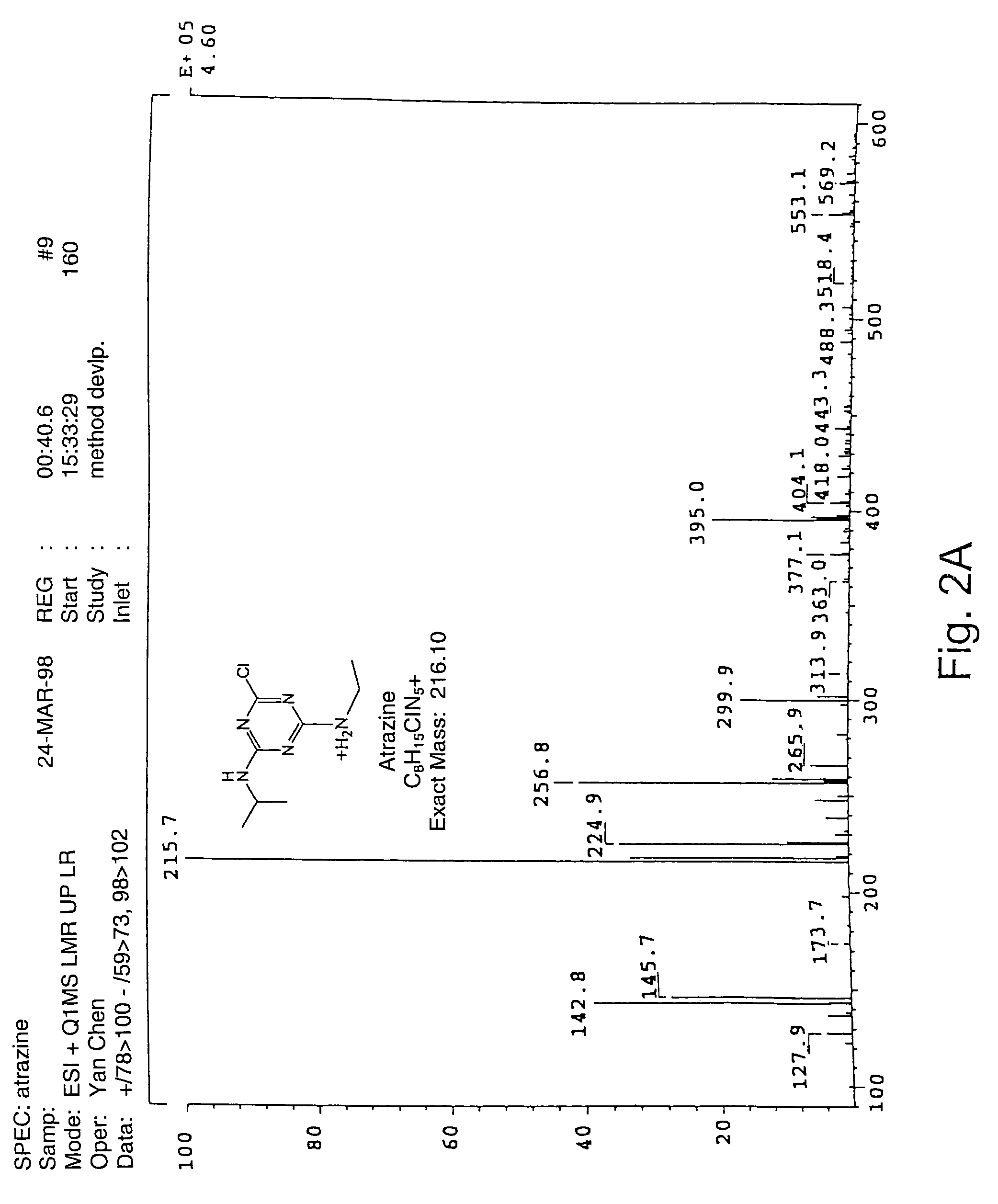High throughput mass spectrometry
a mass spectrometry and high throughput technology, applied in the field of mass spectrometry high throughput methods, can solve the problems of time limitation, limited the ability of mass spectrometry to screen a large number of reaction products, and the use of mass spectrometry to analyze these enzyme reactions is extremely time-consuming, so as to achieve the effect of high throughput mass spectrometry and faster method of mass spectrometry screening
- Summary
- Abstract
- Description
- Claims
- Application Information
AI Technical Summary
Benefits of technology
Problems solved by technology
Method used
Image
Examples
example 1
HTP-MS—Atrazine Production
[0143]Atrazine is a member of the family of triazine-derived herbicides. Bacteria from sites contaminated with this widely used herbicide were isolated that were able to metabolize and degrade atrazine. A Pseudomonas strain was found to contain a gene encoding atzA, a 473 amino-acid protein that catalyzes the transformation of atrazine to hydroxyatrazine, the first step in the degradation pathway of atrazine (see also, De Souza, M., Sadowsky, M. J. & Wackett, L. P.: Atrazine Chlorohydrolase from Pseudomonas sp. Strain ADP: Gene Sequence, Enzyme Purification, and Protein Characterization. J. Bacteriol. 178:4894–4900 (1996)) (see also, FIG. 1).
[0144]The biochemical degradation of atrazine by the Pseudomanas strain sp. ADP is an environmentally sound way of cleaning up contaminated sites. In order to be economically competitive, an increase of the wild type activity of the atza gene was desirable. The atzA gene was cloned into a pUC-derived vector under the co...
example 2
High Throughput Screening for Directed Evolution of Enzymes and Pathways Using Mass Spectrometry
[0156]High throughput chemical screening of enzyme reactions involves quantitative detection of substrate(s) and product(s). The most universal detection method to date is mass spectrometry which allows identification of a particular organic molecule, e.g., based on mass to charge ratio. Electrospray ionization is a mild method of transferring charged polar organic molecules into the gas phase and applicable for most biologically relevant organic molecules.
[0157]DNA shuffling technology is used to create a library of related gene sequences that encode enzyme(s) that catalyze chemical reactions. The library of related gene sequences are, e.g., on plasmids that are transformed into bacteria. Typically, a single bacterial clone carries a unique gene sequence representing a unique variant of a particular enzyme or enzyme pathway, although many other shuffling formats are also suitable.
[0158]F...
PUM
| Property | Measurement | Unit |
|---|---|---|
| Concentration | aaaaa | aaaaa |
Abstract
Description
Claims
Application Information
 Login to View More
Login to View More - R&D
- Intellectual Property
- Life Sciences
- Materials
- Tech Scout
- Unparalleled Data Quality
- Higher Quality Content
- 60% Fewer Hallucinations
Browse by: Latest US Patents, China's latest patents, Technical Efficacy Thesaurus, Application Domain, Technology Topic, Popular Technical Reports.
© 2025 PatSnap. All rights reserved.Legal|Privacy policy|Modern Slavery Act Transparency Statement|Sitemap|About US| Contact US: help@patsnap.com



